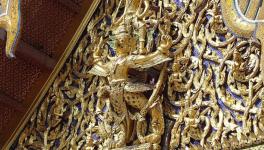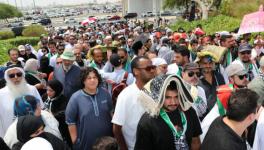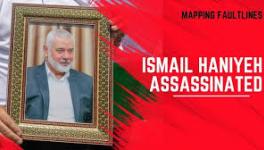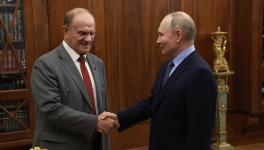Iraq's Night is Long
"Iraq’s night is long
Dawn breaks only to the murdered,
Praying half a prayer and never finishing a greeting to anyone.”
Mahmoud Darwish, Athar al-Farasha (tr. Sinan Antoon).
Beirut.
Northern Iraq, between the Kurdish zone and Baghdad, convulsed before the blitzkrieg of three formations — the Islamic State of Iraq and Greater Syria (ISIS), the Iraqi Islamic Army (manned by former Ba’athists) and elements of the former Mujahedin Shura Council. Like the Mongols, ISIS – the main force – runs across the landscape unchecked. It did not take long for Iraqi army soldiers to throw off their uniforms and join the caravans of Iraqis fleeing north and south from along the Tigris River cities of Mosul and Tikrit as well as from the western city of Tal Afar – along the road that links Iraq to Syria. Those Iraqi soldiers captured by the ISIS and their confederates had a perilous time. ISIS soldiers divided them up by their sectarian denominations. Before their own video cameras, ISIS troops slaughtered the Shia soldiers – 1700 by their own admission – and then posted the video on-line. Sunni soldiers were forced, on pain of death, to recite their fealty to the eternal Islamic State. The UN Human Rights chief, Navi Pillay, has already said that these killings constitute a war crime.
ISIS is the leading force in this new adventure, but it is not alone. Next to it is the Iraqi Islamic Army, led by Saddam Hussein’s former deputy Izzat al-Dori Ibrahim, and the Muslim Ulema Association. What unites these three forces – al-Qaeda extremists, Ba’athists and decamped Iraqi military personnel – is despair at Iraqi premier Nouri al-Maliki’s sectarianism and the failures of the Iraqi state to draw in the largely Sunni towns that run up the River Tigris from Baghdad. Muqtada al-Sadr, the leader of the Mahdi Army, said in February that Iraq “is ruled by wolves, thirsty for blood, souls that are eager for wealth, leaving their nation in suffering, in fear, in water puddles, in dark nights, lightened only by moonlight or a candle, swamped by assassinations based on differences or after ridiculous disagreements.” He left for Iran, fed up with the politics and violence in his land. This despair is what gave ISIS the opportunity to build its bases in northern Iraq.
Former UK Prime Minister Tony Blair said that the rise of ISIS is not related to the Iraq War of 2003, but to the western inaction in Syria. But ISIS was born in 2004, first as al-Qaeda in Iraq under the leadership of the bloodthirsty Jordanian militant Abu Musab al-Zarqawi, then two years later it was reborn as Islamic State of Iraq. Slow growth in the small towns of northern Iraq amidst former Iraqi military men and hardened Ba’athists helped the Islamic State grow despite the US destruction of the cities of Fallujah and Ramadi, and the Sunni Awakening movement of 2005. As interest in the Sunni Awakening waned in Washington and Baghdad, its fighters joined the Islamic State. These are veterans of the insurgency against the US-UK occupation of Iraq. They had nothing to do with Syria.
When the Syrian civil war broke out in 2011, it was the Islamic State in Iraq under its dynamic leader Abu Bakr al-Baghdadi – as al-Akhbar’s Radwan Mortada found – that helped set up the al-Qaeda affiliate in Syria, Jabhat al-Nusra. Over the course of 2012 and 2013, ISIS and al-Nusra began to fall out, as the latter felt that it had authority over Syria and wanted Syrians to be doing the bulk of the fighting in that country. The Islamic State expanded its name to the Islamic State of Iraq and Greater Syria, increasing its fighters with imports from across the world. By early 2014, there might have been as many as a hundred thousand fighters who were willing to fight under the colors of ISIS. Most are not jihadis, as I found, but disgruntled veterans of the Sunni Awakening and its type of outfits. ISIS provided the best vehicle for their frustrations.
Despite its clashes with al-Nusra, ISIS retained control of the northern Syrian cities of Raqqa and Deir ez-Zor, held since mid-2013. Spluttering oil fields in eastern Syria and sale of antiquities helped ISIS increase its revenue stream, which had previous relied upon taxes in northern Iraq and private donations from Gulf Arab sheikhs. The ISIS coffers, till last week, held about five hundred million dollars. The sack of Mosul earned them $1.5 billion, as the Guardian’s Martin Chulov showed; the capture of the Baiji oil refinery offering the potential of greater resources. Since the Iraqi troops offered little resistance, ISIS and its allies seized mint-condition military equipment, much of it provided by the US to help the Iraqis fight ISIS. This weaponry will now be used in Syria and Iraq to further ISIS’s agenda for the creation of an Islamic State. One of the first things the group did when it took Mosul was to break the border posts between Syria and Iraq as a propaganda gesture. Its vision of a belt that runs from Tripoli (Lebanon) to the borders of Iran is near reality.
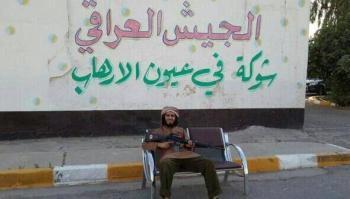
The rapid advance drew a combined and coordinated response from the aerial power of both the Syrian and Iraqi air force. Iraqi helicopters even attacked the cemetery that holds the remains of Saddam Hussein in al-Auja, near Tikrit. It was a message from Baghdad to the Ba’athists, and is calculated to inflame rather than contain. This is dangerous. Iraqi nationalism was asphyxiated in the dungeons of the Ba’ath – it is no longer a foundation to which the government of Nouri al-Maliki could turn. He relies upon the currency of sectarianism. Coordination between the armies of Syria, Iraq and Iran – with Turkey in the wings – is already established. But this coordination will always sniff of sectarianism unless Turkey is party to the operations, which it might be if it sees the fragmentation leading to unity between Syrian and Iraqi Kurdistan. Such a Kurdish homeland would be a direct challenge to Turkey. Far better to nip these opportunities in the bud.
Calls from the trade unions of Iraq that the people are ready to resist ISIS on a nationalist platform, such as by Falah Alwan of the Federation of Workers’ Councils and Unions in Iraq, will go unheard. Few can appreciate it when Alwan says that “demands to be rid of sectarianism are clear and direct” – noble statements no doubt – but inaudible before the harshly sectarian guns of ISIS. It delivers the Kurdish people to the Kurdish peshmerga and YPG and the Shia to al-Maliki and his favoured militias. The sectarian vaults, opened up by the US Shock and Awe campaign of 2003, now provide the main currency in Iraq and Syria – a tragedy of immense proportions.
The ISIS advanced down the Tigris toward Baghdad, but it was halted near Samarra. It was not the Iraqi military that formed the wall – in the picture from near Mosul an ISIS fighter sits with a grin on his face in front of a sign that reads, “The Iraqi army is a fork in the Eyes of Terrorism.” That army vanished. It is nowhere to be seen. In its place come various Shia militias, such as the Asa’ib Ahl al-Haq (AAH), a breakaway from the Mahdi Army and given a long license by al-Maliki. Its leader Qayis Khazali was expelled from the Mahdi Army by al-Sadr because he is a loose cannon. His group has been active across Iraq, accused of supplanting the security services and being some of the most ruthless fighters around the shrine of Sayida Zainab in Damascus, Syria. Hezbollah fighters complain that the AAH fighters had to be taken in hand and trained to calm down. The senior Shia cleric Ayatollah Ali Sistani issued a fatwa calling upon “all able-bodied Iraqis” to defend Iraq from ISIS. He roused up the AAH and its offshoots. Ammar al-Hakim, leader of the Islamic Supreme Council of Iraq, shrugged off his clerical uniform and put on for military fatigues. This is the character of the fight – deep into the sectarian trough.
Before he went off to Iran, al-Sadr had been critical of the sectarianism of al-Maliki and the growth of the power of groups such as the AAH. They were alienating other Iraqis and setting the table for trouble. He has now called for the reformation of his Mahdi Army, and for a show of strength on June 21st. It is unlikely that he will appeal to any new constituencies, outside the sectarian boxes to which Iraqis are likely to head. There is no objective basis for Iraqi nationalism, as there is none for Syrian nationalism. These are fractured countries, broken by war. Syrians and Iraqis are prisoners in a burning prison. There are no easy, unbarred exits.
US promises to bomb ISIS from the air are not a tonic. They would only stop its advance, but not break its power, which stretches from parts of Syria’s Aleppo to the outskirts of Iraq’s Baghdad. It is Iran that has the most to lose here. It has already sent sections of its Revolutionary Guard Corps to help form a line of defense in the province of Diyala, whose main city Baquba was the origin of the Islamic State of Iraq. This is a part of Iraq where Shias and Sunnis live, and it would be a test of their unity against ISIS and for something other than the sectarianism of al-Maliki. Al-Sadr, I am told, is interested in the creation of an Iraqi version of Hezbollah, rooted in the Shia community of Lebanon but with pretensions of being an Arab nationalist force. The creation of such a force would contribute toward a non-sectarian platform from which to combat ISIS. It will be more effective than a bombing campaign.
Vijay Prashad is the author of The Poorer Nations: A Possible History of the Global South (New Delhi: Leftword, 2013).
Disclaimer: The views expressed here are the author's personal views, and do not necessarily represent the views of Newsclick.
Get the latest reports & analysis with people's perspective on Protests, movements & deep analytical videos, discussions of the current affairs in your Telegram app. Subscribe to NewsClick's Telegram channel & get Real-Time updates on stories, as they get published on our website.















